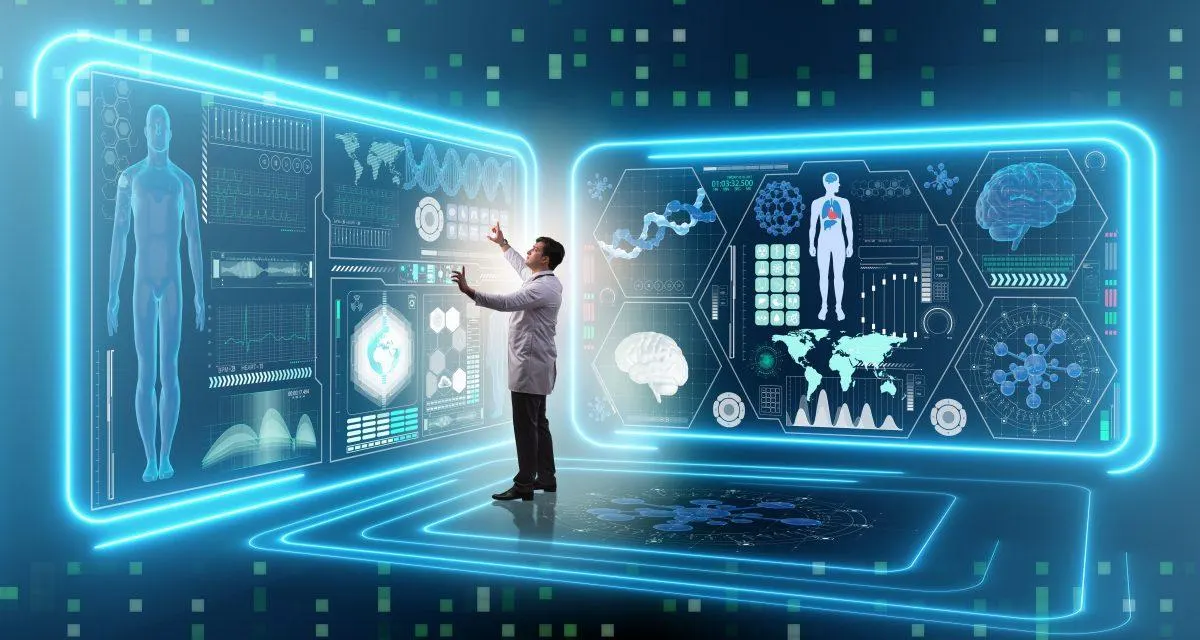Table of Contents
With the development of sophisticated AI-powered instruments and technologies over centuries, medicine is poised for a technological revolution.
The Dawn of Traditional Medical Instruments
Sticks, bones, and surgical instruments were among the first tools used in medicine. Through trial and error, these instruments developed, giving rise to important innovations like the thermometer, stethoscope, and scalpel. The sphygmomanometer enhanced cardiovascular health, and the stethoscope transformed diagnostics by listening to internal body sounds. The basis for surgical techniques and medical diagnostics was established by these early instruments.
The Advent of Medical Imaging
Diagnostic capabilities were transformed by medical imaging technologies such as CT, MRI, and X-rays. By enabling doctors to view internal structures without requiring invasive surgery, X-rays enhanced patient care and diagnostic precision. MRI helped diagnose complicated conditions by providing detailed images of soft tissues, organs, and other parts without the use of ionizing radiation. CT scans improved diagnostic accuracy by combining computer processing and X-ray technology. By improving patient care and setting the stage for upcoming developments in medical technology, these breakthroughs transformed contemporary medicine.

The Integration of Electronic Health Records (EHRs)
Electronic Health Records (EHRs), which compile patient data in real-time, have transformed patient data management in the digital age. Paper records are replaced by this technology, which guarantees efficient, safe, and well-organized data management. By lowering medical errors, EHRs enhance patient safety, coordination, and continuity of care. They encourage collaborative care by facilitating information exchange between various healthcare systems. Clinical decision support systems (CDSS) enhance clinical decision-making by offering evidence-based recommendations and prompts. EHRs also support research and health informatics.
The Rise of Telemedicine
The modern era of healthcare delivery is best exemplified by telemedicine. Telemedicine, which uses digital communication technologies to link patients and healthcare providers, has its roots in the need to provide medical care over long distances. By enabling remote consultations, diagnosis, and treatment recommendations, this strategy overcomes geographic limitations and expands access to healthcare, especially in underserved and rural areas.
Telemedicine enables medical professionals to conduct virtual examinations, review patient histories, and provide medical advice by enabling video consultations. When there is a lack of immediate access to medical professionals, this format is essential. Additionally, telemedicine offers continuity in the treatment of chronic illnesses by facilitating timely interventions and routine monitoring without requiring in-person clinic visits. Continuous management through telemedicine greatly improves patient outcomes for conditions like diabetes, hypertension, and mental health disorders.
Telemedicine became an essential tool during international crises like the COVID-19 pandemic, preserving medical services while reducing the risk of virus transmission. The effectiveness of telemedicine was widely accepted during this time, leading to improvements in digital health platforms and legal frameworks that facilitate its long-term incorporation into healthcare systems.
The capabilities of telemedicine are enhanced by developments in wearable technology and mobile health apps, which provide automated alerts for anomalies and real-time health data monitoring. Virtual reality and augmented reality hold promise for future advancements in technology, which could lead to immersive patient-provider interactions and virtual physical assessments.
All things considered, telemedicine revolutionizes the provision of healthcare by improving patient engagement, accessibility, and efficiency. Telemedicine is a significant advancement in contemporary medicine that ensures comprehensive care regardless of physical proximity by bridging distances and offering real-time health management solutions.

Artificial Intelligence: The New Frontier
With its unparalleled potential to improve patient care, treatment planning, and diagnosis, artificial intelligence (AI) is bringing about a paradigm shift in medicine. With the ability to quickly and accurately analyze large volumes of medical data, AI systems are able to spot trends and forecast results that human clinicians might miss. A subset of artificial intelligence called machine learning algorithms gradually increase the accuracy of diagnoses by learning from data inputs.
AI-powered diagnostic tools examine imaging data to accurately diagnose diseases like cancer, fractures, and neurological disorders. For example, AI algorithms in radiology can frequently outperform conventional techniques in detecting abnormalities in CT scans or early-stage tumors in mammograms. By facilitating faster and more precise disease detection, this enhances the diagnostic process and improves patient outcomes.
AI is used in personalized medicine and treatment planning. AI systems can customize treatment regimens for each patient by evaluating genetic information and medical records, improving therapeutic results and reducing side effects. By using precision medicine, interventions are more likely to be successful and tailored to the individual needs of each patient.
By simplifying administrative duties like patient scheduling, billing, and resource allocation, AI also improves the operational efficiency of healthcare systems. By forecasting patient admission rates, optimizing staffing levels, and cutting down on wait times, AI-powered predictive analytics can enhance the overall patient experience.
Additionally, AI-powered chatbots and virtual assistants give patients round-the-clock access to health advice and information, encouraging increased patient involvement and self-management. These tools improve healthcare accessibility and convenience by responding to medical questions, reminding users to take their medications, and even performing initial evaluations.
By improving diagnostic capabilities, customizing treatment regimens, increasing operational efficiency, and empowering patients, artificial intelligence essentially reshapes the future of medicine. A new era of medical innovation and excellence is anticipated as AI technology develops further and is incorporated into healthcare, where it is expected to spur ongoing advancements.


